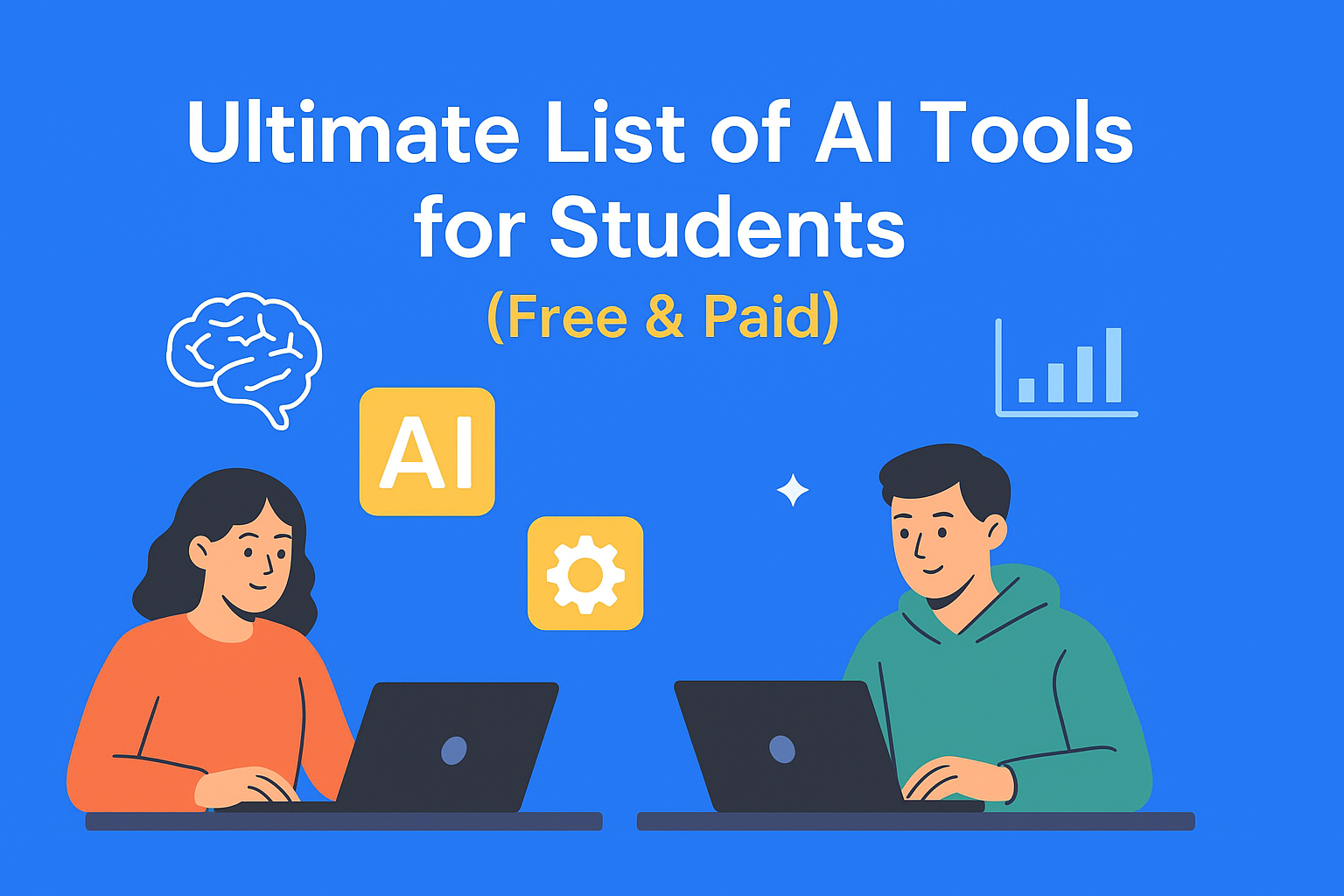Introduction
In the fast-paced world of 2025, artificial intelligence (AI) has become an integral part of education. Whether you’re a high school student preparing for exams, a college undergrad managing research projects, or a graduate student balancing academic writing with a part-time job, AI tools can significantly boost your productivity, creativity, and learning experience.
This guide covers the best free and paid AI tools for students, how they can be used effectively, and tips to maximize their value.
1. AI Writing Assistants
1.1 ChatGPT (Free & Paid)
- Best for: Brainstorming ideas, answering questions, drafting essays.
- Why it’s great: Offers instant feedback, helps clarify complex concepts, and can adapt to your tone.
- Pro Tip: Use for structuring outlines rather than submitting AI-generated essays to avoid plagiarism issues.
1.2 Grammarly (Free & Premium)
- Best for: Proofreading and grammar checks.
- Why it’s great: Detects grammar, punctuation, and style issues instantly.
- Pro Tip: Use the premium version for academic tone adjustments and plagiarism checks.
2. AI Research & Study Helpers
2.1 Perplexity AI (Free)
- Best for: Researching with citations.
- Why it’s great: Provides source references with every answer.
- Pro Tip: Double-check sources for academic integrity.
2.2 Scholarcy (Paid)
- Best for: Summarizing long research papers.
- Why it’s great: Saves hours by condensing PDFs into digestible bullet points.
3. AI Note-Taking & Organization Tools
3.1 Notion AI (Paid Add-On)
- Best for: Organizing class notes, project management.
- Why it’s great: Combines note-taking, task lists, and AI summaries in one.
- Pro Tip: Create a semester dashboard to track deadlines and grades.
3.2 Obsidian with AI Plugins (Free & Paid)
- Best for: Personal knowledge management.
- Why it’s great: Powerful linking system for building long-term learning memory.
4. AI Presentation & Visual Tools
4.1 Canva (Free & Pro)
- Best for: Creating visually appealing presentations.
- Why it’s great: AI design suggestions save time.
- Pro Tip: Use AI text-to-image for unique slide visuals.
4.2 Gamma App (Free & Paid)
- Best for: Auto-generating slide decks from text prompts.
5. AI Language Learning Tools
5.1 Duolingo Max (Paid)
- Best for: Language learners.
- Why it’s great: AI-powered roleplay for real-world scenarios.
5.2 LingQ (Free & Paid)
- Best for: Reading and vocabulary building in foreign languages.
6. AI Math & Science Solvers
6.1 Wolfram Alpha (Free & Paid)
- Best for: Solving math, physics, and chemistry problems.
- Why it’s great: Provides step-by-step solutions.
6.2 Photomath (Free & Paid)
- Best for: Learning problem-solving methods by scanning equations.
7. How to Choose the Right AI Tool
When selecting an AI tool as a student:
- Identify your need – writing, research, visuals, or problem-solving.
- Check for academic integrity – avoid tools that generate content without proper citations.
- Balance cost and value – many free versions are sufficient for most tasks.
- Integrate into your workflow – use tools consistently for best results.
Conclusion
AI tools can transform your academic life in 2025, but the key is to use them as learning aids, not shortcuts. The right combination of free and paid options will help you stay productive, organized, and ahead in your studies.


Leave a Reply